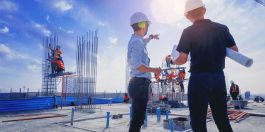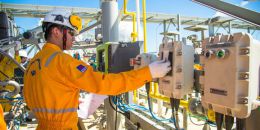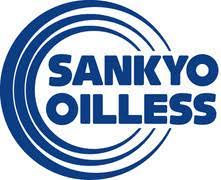News

Vietnam's mechanical industry in the Industrial Revolution 4.0
15 May 2021 / News
Recognizing the opportunities and challenges of Vietnam's mechanical industry, the article proposes a few recommendations to help Vietnamese mechanics overcome challenges, take advantage of opportunities and develop sustainably in the context of the modern world. Industrial Revolution 4.0.
Development situation of Vietnam's mechanical industry
Mechanical engineering is one of the industries with a long history in our country. Initially, it was expressed in the form of crafts to create production tools, weapons, etc. to serve the construction, development and preservation of the country.
Under the French colonial period, although this profession has been strongly developed, it has not yet become an industry in the true sense of the mechanical industry. It was not until 1958, when Tran Hung Dao Mechanical Factory was built, that the foundation of the mechanical industry was rekindled.
Since then, this industry has developed quite comprehensively, has specialized in some fields, has a certain level of technology, and plays the role of the "backbone" industry of the country. social production, providing equipment, machine tools, dynamic machines... for all economic sectors, meeting people's daily needs, making an important contribution to the development of the land economy water.
Identify the important and fundamental role of the mechanical industry in socio-economic development. On October 17, 2003, the Politburo issued Conclusion 25-KL/TW on the development strategy of Vietnam's mechanical industry with specific views and guidelines: "Mechanical engineering is a fundamental industry. foundation, playing a particularly important role in socio-economic development" and "must build the mechanical engineering industry to be competitive enough to rise up in the market mechanism and international economic integration".
Institutionalizing the guidelines and guidelines of the Party, the Government has promulgated the Strategy for the development of the mechanical engineering industry in Vietnam until 2010, with a vision to 2002, the mechanisms and policies prioritizing the development of a number of majors and industries. key mechanical products.
The Prime Minister promulgates Decision No. 10/2009/QD-TTg dated January 16, 2009 on the mechanism to support the development of production of key mechanical products and the list of key mechanical products, the list of key mechanical products and the list of key mechanical products. investment project to produce key mechanical products, period 2009-2015; Decision No. 1791/QD-TTg dated November 29, 2012 of the Prime Minister approving the Mechanism for pilot implementation of design and domestic manufacture of equipment for thermal power plants in the period 2012-2025; Decision No. 1556/QD-TTg dated October 17, 2012 of the Prime Minister approving the Project "Support for the development of small and medium-sized enterprises (SMEs) in the field of supporting industries"; Directive No. 494/CT-TTg dated April 20, 2010 of the Prime Minister on the use of domestically produced materials and goods in bidding for projects using state capital.
Taking advantage of the Government's attention and support, Vietnam's mechanical industry over the past time has achieved certain results.
Specifically, a number of fields have recorded changes and breakthroughs such as: Manufacture of hydraulic equipment (supplied for large and small hydroelectric power plants in the country), manufacture of oil and gas rigs (supplied to large and small hydroelectric plants in the country). providing exploration drilling, oil and gas exploitation to a depth of 120m, lifting rig 90m water, oil well drilling rig), electrical equipment, manufacturing and supplying equipment for cement plants, shipbuilding various types (oil tankers up to 105 thousand DWT, liquefied gas tankers up to 5,000 tons, bulk carriers...), complete equipment works (sugar factory capacity of 1,000 tons of sugarcane/day), rubber latex processing capacity of 6,000 tons/year).
Domestic mechanics have also produced and assembled almost all types of passenger cars, trucks, and passenger cars; Motorcycle production has had a localization rate of 85-95%, meeting domestic and export demand.
A number of research and design agencies and mechanical manufacturing enterprises have gradually innovated, improved their consulting, design, equipment and technology manufacturing capabilities, and participated in the implementation of a number of bidding packages of various projects. national key project.
The number of mechanical enterprises increased rapidly, from about 10,000 enterprises (in 2010) to more than 21,000 enterprises in 2016, accounting for 28% of the total number of manufacturing enterprises, creating jobs for more than 1 million workers, accounting for 17% of the total number of employees. in the processing and manufacturing industries. According to calculations by the Institute of Industrial Strategy and Policy (Ministry of Industry and Trade), the industrial production value of the mechanical engineering industry in 2015 accounted for 16.36% of the production value of the processing and manufacturing industry.
According to statistics, in 2016, the export turnover of mechanical products also reached over 13 billion USD, mainly household appliances and spare parts for cars and motorcycles. If including iron and steel of all kinds, the export turnover of mechanical products of Vietnam in 2016 reached over 16 billion USD. These results have partly contributed positively to socio-economic development and accelerated industrialization and modernization of the country.
Although certain results have been achieved, Vietnam's mechanical industry currently still has many limitations, which are reflected in the following specific aspects:
Firstly, about the market: The mechanical engineering industry is diverse in products, but the competition from imported products is quite fierce. Market expansion is still difficult due to lack of market information and competitive capacity of domestic enterprises is not strong enough.
Even in the domestic market, it is difficult for mechanical enterprises to participate in investment projects to install equipment in the steel, chemical and energy industries, mainly due to the lack of quality inspection systems. products according to international standards; Domestic enterprises and mechanical products have not yet built a brand name and are known by many potential customers. Moreover, free trade commitments also put pressure on domestic enterprises when tariff barriers to protect domestic production are removed.
Secondly, about the level of science and technology: Practice shows that the mechanical engineering industry in Vietnam has very few registered inventions and inventions, and the equipment and technology level of the whole industry is slow to innovate. Mechanical enterprises lack output for products, so they do not have the opportunity to accumulate and invest in technological innovation. The Industrial Revolution 4.0 (CMCN4.0) took place, new technologies have completely changed the current production methods and methods, posing urgent requirements in innovation and updating of technology trends. for mechanical enterprises.
Third, about raw materials: Raw materials for the mechanical engineering industry are mainly iron and steel and non-ferrous alloys, most of these materials cannot be produced domestically, so they have to be imported.
Fourth, on human resources: Human resources in the mechanical engineering industry in Vietnam are still lacking and weak in both quantity and quality. The number of highly skilled mechanics has decreased, and specialized workers lack international certificates and foreign language skills. The research and development force, first of all, is a team of design consultants who are not qualified to meet the requirements of works and projects on synchronous mechanical equipment.
Fifth, the role of industry associations has not been effective: Industry associations have not been able to promote their representation in the collection of common ideas and actions; The participation of mechanical enterprises has not been attracted and the member enterprises have not been closely linked. Currently, the Vietnam Mechanical Association has only attracted the participation of more than 100 enterprises out of a total of over 21,000 mechanical enterprises.
The cause of the above shortcomings and limitations is that most of the domestic mechanical enterprises have small production scale, medium technology level, and have not yet confirmed their market capacity. Although some foreign firms have strong brands, in Vietnam, they mainly assemble for local consumption; The level of association and cooperation is still low, failing to promote the power of division and cooperation in production; The fixed capital for mechanical production is usually large, the working capital loan cycle is low, so it is difficult for mechanical enterprises to raise capital, so mechanical projects are also less attractive to commercial banks. compared to other projects in the field.
The overlap in management also limits the development of the Mechanical Engineering industry, the monopolization of technology and equipment limits the division of specialization, and slows down technical and technological innovation in mechanical production. gas, uneven product quality, high production costs.
The development of standards and techniques of the mechanical engineering industry has not been paid due attention, lack of synchronization with the support of activities of accrediting agencies according to registered standards and regulations; Bidding criteria in many cases also create advantages for foreign enterprises to win bids; Conditions for negotiating the purchase of machinery and equipment are often detrimental to domestic enterprises...
Opportunities and challenges for the Mechanical Industry Vietnam in the Industrial Revolution 4.0
According to experts, Industry 4.0 has an important impact on mechanical production in the present and in the future, especially on issues of technology management, production management..., specifically Industry 4.0 will bring many opportunities for Vietnam's mechanical engineering industry to develop, which are:
Firstly, Industry 4.0 allows mechanical enterprises to access information, access knowledge, access advanced technologies...
Second, Industry 4.0 with new technological breakthroughs helps to drastically reduce the cost of manufacturing and operating robots, drastically reducing the production costs of additive manufacturing technology (3D printing technology), thereby increasing the ability to apply robots, additive technology to replace cutting technology in mechanical production for countries with limited economic potential like Vietnam.
Third, Industry 4.0 is an opportunity for Vietnam to "take a shortcut to take the lead". Our country's mechanical engineering industry has not yet developed, the scale is still small, so the inertia is small, the risk may not cause too great a loss.
Fourthly, Mechanical workers are eager to learn and quick to adapt to new things, so it is easy to adapt to new opportunities and technologies from Industry 4.0, thereby improving them. level, create and grasp advanced technology to apply.
Fifth, with the quick approach and flexible application of the achievements of Industry 4.0, our country's mechanical engineering industry will have many opportunities to improve technology level, increase productivity, and shorten production time. products to the market, producing products with quality, competitive prices... thereby, changing management and administration methods in mechanical production.
Besides opportunities, Industry 4.0 also brings many challenges to Vietnam's mechanical industry, which are:
Firstly, in the Industrial Revolution 4.0, mechanical workers may have difficulty in finding jobs, because manual jobs will be automatically replaced by robots and automatic machines. The formation and development of a mechanical engineering workforce equipped with skills and qualifications to exploit and master new technologies and operating methods is also a big challenge for human resource training. force of our country's mechanical industry today.
Secondly, our country's mechanical enterprises are mostly small and medium enterprises, not yet competitive enough, not ready to approach new technologies. Many businesses are still passive with new development trends, not ready to change the business organization model, in which, the competitive pressure is getting fiercer and facing the pressure of investment resources to transform. innovation, breakthrough.
Third, Industrial Revolution 4.0 with new technologies, especially 3D printing technology (additive technology) has completely changed the traditional cutting technology of Vietnam's mechanical industry. This technology allows customers to order products with custom designs and produce them at a faster rate, and the world is changing more and more rapidly, not just limited to manufacturing. products from plastic materials, now metal materials are also being applied this technology.
Not to mention, mechanical production systems in Industry 4.0 must be systems capable of deep connection, recognition, data collection and exchange such as Cyber Physical Systems or Internet of Things, which are considered key technologies. has not yet been applied in mechanical production in our country.
Problems facing Vietnam's mechanical industry
From the analysis of development practice, limitations, challenges and opportunities of the mechanical industry in the context of Industry 4.0, in order to promote the sustainable development of Vietnam's mechanical engineering industry, the Vietnam Mechanical Engineering Development Strategy needs to identify Identify and take note of the following issues:
- About the market: Creating a market is a prerequisite for the development and handling of commercial fraud and the rampant import of used equipment.
- Regarding investment capital: Create long-term loans with stable interest rates according to the characteristics of production investment for Mechanical enterprises.
- Regarding bidding activities for domestic works and projects: Promulgate bidding regulations to contribute to improving the rate of use of domestically produced materials and goods and manage general contractor packages in the form of Contracts. design, supply technology equipment and construction works (EPC) on machinery and equipment, to be able to create a market for domestic mechanical enterprises.
- Regarding industrial promotion, investment promotion and trade promotion: Develop mechanisms and policies to support production and encourage domestic consumption of mechanical products in line with Vietnam's international commitments. .
- Regarding business linkages: Implement business connection programs to strengthen linkages and joint ventures between domestic enterprises and large enterprises in the world in the value chain to access technology and standardize product.
In order to achieve the goal of 2035, Vietnam's mechanical engineering industry is developed with most of the majors with advanced technology, product quality meeting international standards, deeper participation in the global value chain, basically meet the needs of mechanical products of the domestic market; Export output reaches 45% of the total output of the mechanical engineering industry. In the coming time, Vietnam needs to synchronously implement the following strategic solutions:
Firstly, complete the system of mechanisms and policies that are synchronous and strong enough to support the development of the mechanical engineering industry. In the immediate future, the Government should soon develop and issue a Decree on the development of the manufacturing industry.
Second, to develop downstream industries in the field of mechanical engineering with a large supply chain to create opportunities for domestic mechanical enterprises to participate in providing spare parts and components for manufacturing and assembly enterprises. final product assembly. In particular, focus on developing mechanical industries with potential for development such as automobiles, industrial equipment, household mechanics and tools...
Third, improve the quality of trade promotion activities, attract investment from famous mechanical enterprises in the world to gradually form domestic supply chains and seek to expand export markets for enterprises. domestic mechanics.
Fourth, Build and update the database on mechanical enterprises; effectively implement business connection programs, linking domestic enterprises with foreign enterprises. At the same time, improve the quality of statistics as a basis for industry analysis and forecasts.
Fifth, ensure long-term loans with stable interest rates for mechanical enterprises through support programs and preferential packages in accordance with domestic regulations and international commitments.
Sixth, to quickly complete synchronously the standards and regulations for mechanical products, and at the same time, develop and improve the capacity of inspection and testing agencies according to the registered standards and regulations. .
Seventh, build and develop a system of management, assessment and grant of national vocational technical certificates, especially for vocational skills in the field of mechanical engineering; Develop incentive mechanisms to encourage linkages between training institutions and enterprises in training activities and develop training programs and curricula suitable to reality.
References:
1. Conclusion 25-KL/TW dated October 17, 2003 of the Politburo on the development strategy of Vietnam's mechanical engineering industry;
2. Decision No. 10/2009/QD-TTg dated 16/01/2009 on the mechanism to support the development of production of key mechanical products and the list of key mechanical products, the list of production investment projects key mechanical products, period 2009-2015;
3. Decision No. 1791/QD-TTg dated November 29, 2012 of the Prime Minister approving the Mechanism for pilot implementation of design, domestic manufacture of equipment for thermal power plants in the period 2012-2025;
4. Directive No. 494/CT-TTg dated April 20, 2010 of the Prime Minister on the use of domestically produced materials and goods in bidding for projects using state capital.
DK (source: according to Dr. Tran Thi Minh Hang, School Hanoi University of Natural Resources and Environment, http://tapchitaichinh.vn/tai-chinh-king-doanh/nganh-cong-nghiep-co-khi-viet) -nam-in-court-cach-mang-cong-nghiep-40-301443.html)

Attracting foreign investment: the key to developing Supporting Industry
05 Oct 2021 / News
In order to improve the efficiency of attracting, using and managing foreign direct investment, the People's Committee of Vinh Phuc province has set an orientation to attract investment focusing on the fields of agriculture, industry, services and development. infrastructure, projects with high science and technology content, friendly to the environment, making great contributions to socio-economic development; projects capable of participating in global value chains; projects in the fields of: electronics industry, telecommunications; mechanical industry (manufacturing and assembling automobiles, motorcycles...), building materials, new materials and supporting industries of the manufacturing and assembly of automobiles, motorcycles, and electronics; construction and development of industrial park infrastructure, service tourism projects, international-class universities; calling for investment in service industries such as finance, banking, insurance, healthcare, education and training.
The province focuses on attracting investment projects in industrial parks, improving occupancy rates in industrial zones/clusters. Associate industrial development with environmental protection; thoroughly handle the environmental pollution in industrial zones and clusters. To gradually form regional industrial centers. To encourage the attraction of supporting industry projects of the automobile and auto parts manufacturing and assembly industries. Besides, it is also oriented to attract investment by partners. Focus on attracting investment from countries with advanced science and technology that have been successfully investing in Vietnam and Vinh Phuc such as Japan, Korea, Taiwan, EU, USA...
In order to promptly implement the work of improving the investment environment, the People's Committee of Vinh Phuc province has issued documents such as: Plan No. 51/KH-UBND dated February 13, 2020 and Plan No. 49/KH-UBND dated February 13, 2020 March 8, 2021 of the Provincial People's Committee implements the Government's Resolution No. 02/NQ-CP on continuing to perform the main tasks and solutions to improve the business environment, enhance the international competitiveness. in 2020, in 2021.
As a result, in 2020, the total number of new foreign direct investment (FDI) projects in the province is 20 projects with a total registered investment capital of 475.8 million USD, 40 projects increased with with an increase in total registered investment capital of 201.3 million USD. Total newly and additionally invested capital reached 677.1 million USD, equaling 58.4% over the same period in 2019 and equaling 13.1% of the 2020 plan (USD 550 million). The total number of new domestic direct investment (DDI) projects in the area is expected to reach 47 projects with a total registered capital of 8,562.3 billion VND, completing procedures to increase capital for 13 projects with total capital. registered investment increased by 423.9 billion dong.
The total newly granted investment capital and capital increase was VND 8,986.3 billion, equal to 59.6% over the same period in 2019 and exceeded the 2020 plan (5,500 billion VND). In the first 6 months of 2021, the province granted 15 new FDI projects with a total newly attracted investment capital of about 124.2 million USD; increased capital for 13 projects with total increased investment capital of 53.5 million USD. Total newly granted and increased investment capital reached 177.7 million USD, equaling 97.3% of the same period in 2020, reaching 44.4% of the year plan (400 million USD). Most of the projects operate in the industrial and supporting industries.
Van Son (According to https://moit.gov.vn)
.jpg)










.jpg)





